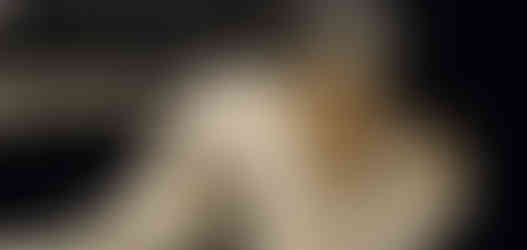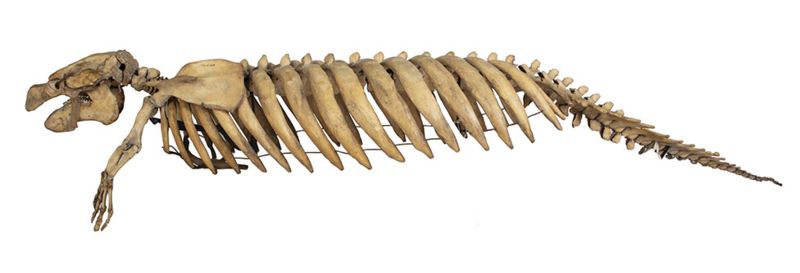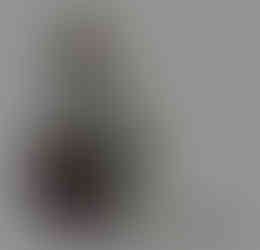Fantastic beasts in the real world and where to find them
[Oct. 26, 2020: Jonathan Amos]

There's a real danger we'll get a Section 3A incident in Central London this December.
Muggles are being invited to see a parade of fantastic beasts at the Natural History Museum (NHM).
Erumpents, snifflers, murtlaps, occamies - you're invited to purchase tickets to see some of these magical creatures, but an obliviate spell will ensure you remember absolutely nothing after the event.
Which would be a great shame because the NHM is promising its new exhibition, Fantastic Beasts: The Wonder of Nature, will be one of the best it's ever staged.
The show has been two years in the planning.
It's a tie-up with the BBC and Warner Brothers, who brought author JK Rowlings' Harry Potter books - and their Fantastic Beasts spinoffs - to the big screen.
The NHM has spied an opportunity to use the interest in the hugely popular wizarding chronicles to tell some stories of it own about the real world and conservation.
"There was a very obvious parallel for us," says Lorraine Cornish, the NHM's head conservator and science lead on The Wonder of Nature.
"Consider Newt Scamander, the lead character in Fantastic Beasts. He's a magi-zoologist who goes around the world, recording and understanding all these amazing animals, but also trying to protect them. And we thought that was a great message, in terms of what we're also trying to do here at the Natural History Museum. So, the parallel is obvious; we're just going to show it to you through a different lens," she tells BBC News.
The exhibition puts 90 specimens from the museum's world famous collections next to 30 or so props from the Potter/Beasts movies. Interactive and immersive displays will essentially compare and contrast the different animals - the real from the imagined.
For example, there's a fictional creature that Rowling invented called a demiguise which can make itself invisible. This is an opening to talk about the different ways many animals in the real world use camouflage. It's not magic, but it's still amazing.
One of the themes of the show will be to explore the possible origins of mythical creatures.
How did ideas around dragons, unicorns, sea serpents and mermaids arise? Probably it was the exaggerations that built up around sightings of very real but quite unusual creatures.
You can only imagine what the indigenous peoples of North America thought when they first stumbled across the fossilised bones of great dinosaurs, or when early sailors caught sight of strange fish. Who wouldn't think, for example, that the giant oarfish, the longest bony fish in the world was some kind serpent?
Like these kind of stories? Get The Brighter Side of News' newsletter.
"There are a lot of stories around the idea that perhaps manatees, or sea cows, were an inspiration for merpeople," says Lorraine. "There's a record by Christopher Columbus in the late 1400s, where he's on his first trip to the Americas and he notes that he saw three mermaids that weren't as attractive, possibly, as he's seen in drawings and paintings.
"We think what he may actually have seen were manatees, because they can use their tails to come almost vertically out of the water."
It's towards the end of the exhibition that visitors will encounter some of the harder messages around biodiversity and conservation.
Just as Newt Scamander wants to highlight the fragility of the beasts that exist in the magiworld, the NHM is on a mission also to highlight the vulnerabilities of the many animals threatened with extinction in the here and now.
A good example is the kakapo, the ground-dwelling bird living on just three islands off New Zealand's coast. Hard work by conservationists continues to try to pull this animal back from the brink, taking numbers up from just a few tens of remaining individuals to a population today of a little over 200.
"This is an amazing story of hope, where people are working together to increase this population," says Lorraine. "We understand why they're threatened, and we're doing something about it. The Kakapo links in the Fantastic Beasts book to Newt Scamander trying to save the last pair of graphorns."
Fantastic Beasts: The Wonder of Nature should have opened in the Spring, but like everything else got postponed in the Covid-19 lockdown.
The museum had to put on its wizarding hat in the meantime to think how to present some of the more interactive elements in this new age of minimal touch. However, it's confident it can now proceed and give visitors an enjoyable and secure experience.
Tickets go on sale on 12 November for an opening on 9 December.
This Brighter Side of News post courtesy of BBC News.

























Commentaires